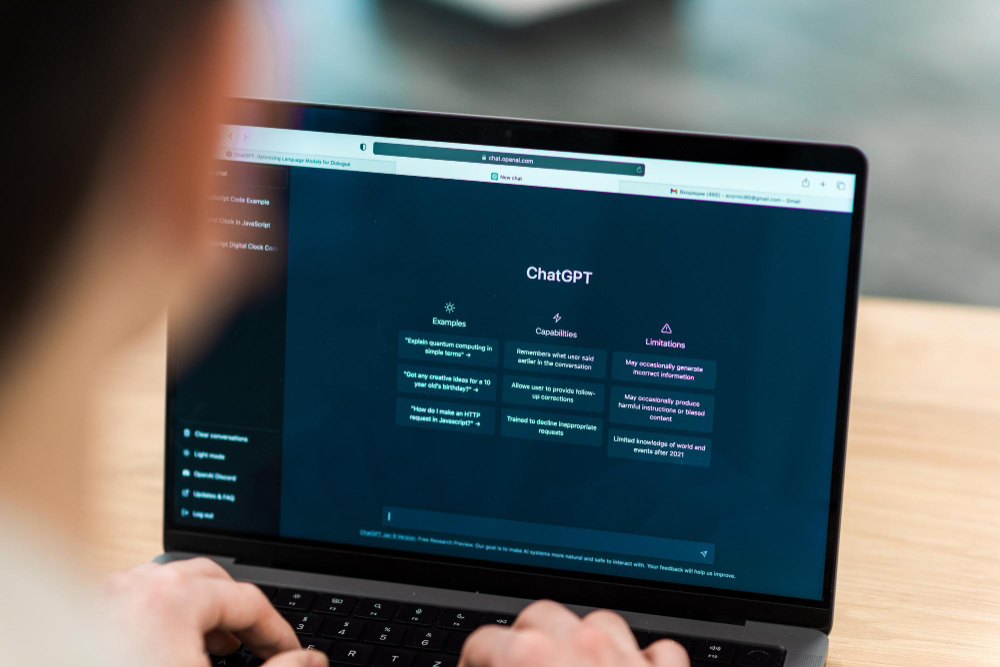Table of Contents
- The Basics of Trust and Respect in a Working Relationship
- 1. Trust: Why is it a Must Have?
- 2. Respects: Why Do We Need it to be Mutual?
- 3. Practical Examples of Trust and Respect
- Building Effective Communication Strategies
- 1. Clarity And Regularity In The Exchanges
- 2. When Communication Tools Come In Handy
- 3. Feelings Control Techniques
- Assigning Role, Duties, and Goals Of The People Working Together
- 1. Role Assignation According to Strengths
- 2. Providing Responsibility and Task Specification
- 3. Outline Realistic Goals
- Being Open to Changes and New Ideas
- 1. Accepting Changes and Being Ready to Make Adjustments
- 2. Delegating Works Appropriately as Required
- 3. Fostering Initiative and Change Management
- Managing Differences and Settling Issues
- 1. Viewing Disputes Differently and to the Actual Source of the Problem
- 2. Using Conflict Resolution Strategies
- 3. Building Relationships to Avoid Conflict through Communication
- Maintaining the Relationship Throughout the Years
- 1. Creation of Feedback Structure
- 2. Informing and Commemorating Accomplishment
- 3. Facilitating Betterment Throughout
- Conclusion
The Basics of Trust and Respect in a Working Relationship
To facilitate a successful working relationship between two individuals, as mentioned, it is paramount that they are able to properly establish the backend of the relationship. Two important building blocks are at the center when forming the backend of the relationship; these components can be termed as trust and respect. These two aspects have the potential to make or break even the most competent organizational plans meant for sustainability in a business.
1. Trust: Why is it a Must Have?
Transparency is enhanced and tension is alleviated through trust. Where one party understands that the other has an obligation to fulfill and has the responsibility to be honest, good working conditions are created. This trust facilitates smoother communication, more information sharing, and greater willingness to receive criticism as well as provide it.
2. Respects: Why Do We Need it to be Mutual?
Respect ensures that an environment is created that is conducive to healthy relationships. It requires the effort of all the parties to comprehend what is being said, acknowledge the capabilities that can be brought to the table, and show value to the experience offered. For example, when offering constructive criticism, difficult messages can be communicated in a way that does not hurt the individual, but instead encourages them to try their best. Little by little, this respect is built, which eventually results in a greater willingness to work hard to accomplish the set objectives.
3. Practical Examples of Trust and Respect
- Active Listening: Show the courtesy of hearing them out first without any judgments or interjection.
- Constructive Feedback: Direct the feedback to be appropriate, constructive and not purely critical.
- Honesty in Commitments: Guarantee within the bounds of your capabilities and if it goes wrong due to circumstantial contingencies meaningfully apologize lastly.
Once you can incorporate the principles of trust and mutual respect into your professional relationships, you are prepared to build a truly effective collaboration that is capable of transitioning to high performance and mutual satisfaction.
Building Effective Communication Strategies
A powerful two-part collaboration depends on a clear definition of communication, quality and volume of the exchange, and active listening on the other party's part. Once again, the goals of the undertaking become mutual and open communication helps achieve them as there are no hidden motives behind it. Communication also becomes the end result to the goal set. Such communication strategies enhance not only the end result but others deriving from it.
1. Clarity And Regularity In The Exchanges
In order for an efficient workflow to be in place, a consistent check in regime must be established for all parties involved. This could range from weekly conferences or monthly telephone calls to simply sending out emails. Constant working environments also aid in proper visible signs of marking progress for projects. Clarity is stating goals, roles and expectations in ways that remove fluff and saves people time by avoiding assumptions and guesswork.
2. When Communication Tools Come In Handy
Several instruments can be used to improve communication. Sharing information, feedback, video calls and basic software tools like Trello, Slack, and Asana simplify and make document maintenance effortless. This, together with effective communication and appropriate technology minimization of any failures and optimises the information exchange process.
3. Feelings Control Techniques
- Let Everyone Know What The Objective of The Meeting Is: Let all those participating in the discussion know what the meeting objective is.
- Facilitate Listening: Invite participants to repeat important messages in their own words so that those statements are not lost.
- Encourage Questions: Raise questions but know that clarifications may be needed and at times the answer is simply ‘I do not know.’
There is no efficient collaboration in the environment of paranoia, tension and misunderstanding which is why this aims to minimize lack of communication so that boundaries are they clear so when an idea, need or even a concern arises it can be addressed appropriately. This helps ensure that effective communication has been achieved.
Assigning Role, Duties, and Goals Of The People Working Together
Within the framework of an effective collaboration between two individuals , it is imperative to set the scope or parameters of their roles, duties and what common objectives they wish to achieve. This step prevents chaos by laying a clear foundation so there is no friction and to make certain each person is aware, of what is required of them.
1. Role Assignation According to Strengths
Assigning tasks according to the inclination and the strengths of the group members is a critical ingredient of success. As an illustration, if a partner is good at organizing and monitoring tasks, while the other is good at being inventive or solving problems, this complementarity becomes a great merit. In this way, each person works on areas in which they truly assist, thereby improving the effectiveness of the collaboration.
2. Providing Responsibility and Task Specification
From the beginning, dedicate time to enumerate every individual’s tasks, objectives and deadlines. Now that this framework has been set up, communication is made easier: everybody is aware of what tasks must be completed, deadlines set, and how progress is measured. It greatly mitigates the chances of experiencing disputes involving people doing the same tasks, different but related tasks, or doing the same tasks at different times.
3. Outline Realistic Goals
Our shared goals create the very heartbeat of every successful collaboration. Clarity on objectives that are measurable and realistic ensures relevance in respective efforts. Be it an increase in sales, enhanced service quality, or reaching a particular client satisfaction threshold, the vision will always be for the good of the collaboration and will define how success will be measured.
By outlining the duties, functions, and collective objectives, you lay down the third basic building block for effective teamwork, enhancing clarity, results, and engagement in the long term.
Being Open to Changes and New Ideas
Individual’s collaboration will be effective if there is flexibility and willingness to be changed after or during the work or a project. The tips above should make sense since requirements, limitations, and emphasis are likely to vary greatly so if the methods, timeliness, or the work plan needs alteration, it is intelligent to make those adjustments.
1. Accepting Changes and Being Ready to Make Adjustments
Lateness, lack of equipment or other resources needed and even a hearing change in set aims are objectives are all embedded in everyday obstacles. These have the potential to cause discouragement but instead such hardships for some reason, are viewed as chances to try and do things differently, including learning from the experience. This kind of discipline in regard to mindset and organization only thickens the team bond and makes the partnership's strength broader.
2. Delegating Works Appropriately as Required
If it happens that for whatever reason one individual is currently overwhelmed with the workload acceptably on a normal basis always re-evaluating the task division and reassignment . The idea is to remain equable that no one is overloaded. To manage the most output and productivity to ensure that wellbeing of self is importantly protected, the regular checking of the situation enables such reallocation to be identified.
3. Fostering Initiative and Change Management
Last but not the least in this case to be mentioned, the long and effective cooperation is enhanced by the ability of each member’s to suggest even the most heuristic solution, find a different approach, or simply go against the convention. New ideas are never welcomed in a set pattern because it develops a barrier that prevents the processes from evolving on their own or developing together over time. This expanded focus helps to deepen the connection and enhance the trust.
By building capability for readiness and acceptance, a fourth and crucial stack for a successful collaboration is enabled. This approach is, indeed, more solution-oriented and allows one to focus on opportunities even in complex settings.
Managing Differences and Settling Issues
In every working scenario including partnership between two persons, issues and disagreements will arise. Rather than viewing them as inevitable shortcomings, they should be viewed as possibilities for facilitating the dynamics and fostering the convergence of cooperation. The key here is to view the situation differently so as to avoid escalation.
1. Viewing Disputes Differently and to the Actual Source of the Problem
Inevitably someone will feel that they are not making a contribution towards progress when they are aware that their involvement is needed, therefore when a conflict or disagreement arises get to it while it is still fresh and cool. Direct the conversation in a way where every other person can communicate their side without being cut off. Paraphrasing someone’s point of view is one of the useful methods to ensure that there is respect in the process of building consensus.
2. Using Conflict Resolution Strategies
Some of these strategies are:
- Collaborative Talk: Engage in a discussion to seek for ideas or alternatives that are amenable for both collaborative parties.
- Intervention: If needed, call in a neutral person to be in charge of the discussion.
- Intensive Mediation: Look back to the goals set at the beginning in conjunction with statistics in order to arrive at an informed conclusion.
3. Building Relationships to Avoid Conflict through Communication
Usually problems are rooted in bad communication or lack thereof. Set up systems that will help manage expectations, allow for decision making and KPIs to avoid future disputes. Prevention is always better than cure; it is better to foresee than to react.
Resolving conflicts in a constructive way is always an important to the success of the team because it enables the team to enhance their working processes towards their desired goals.
Maintaining the Relationship Throughout the Years
In a very simplistic definition, a healthy relationship between two people does not necessarily stem from one defined target. It needs to have constant improvement aspects to it so that it can be sustained in the longer period of time with recognition from both sides.
1. Creation of Feedback Structure
While feedback can be viewed as offending or harsh, it bears great value in maintaining a healthy interaction. To avoid this issue and to strengthen inter team communication, make it a habit to regularly check in and evaluate performance overall to highlight strengths while marking weaknesses. Precise feedback and evaluation, if it is addressed in an objective and respectful manner, can actually aid in identifying growth opportunities and thus can facilitate healthy problem solving implementation.
2. Informing and Commemorating Accomplishment
Policies shifts might be the most vital strategies in business, yet, there’s nothing more important than recognition and appreciation. Sometime, a simple thank you goes a long way, say that to your partner if your goals were met or milestones were achieved. This sense of recognition and appreciation builds stronger relationships and drives motivation.
3. Facilitating Betterment Throughout
It’s hard to argue that effective collaboration doesn’t transform over time, and it mustn’t be hard to admit that effective collaboration is always the goal. Reflect together on ways to improve your working methods, and whether it’s about collaboration tools, process optimization or new thinking. This way of thinking will enable you always to change and meet the long term goals for which the partnership was made.
The Inter-team bonds that are forged based on recognition, trust and an urge to constantly better oneself bear great value, and if maintained properly, the benefits are boundless. Approaching the situation in this manner ensures a stronger possibility of being able to successfully reach your long term goals with your partner or team along with contentment achieving the shared defined visions.
Conclusion
Considering the tasks and responsibilities entrusted to team members, it is evident that a good collaboration between two individuals should not only be a partnership but be built on solid foundations as well as thorough practices. Steps to establishing this working relationship range from building trust, formulating a conflict resolution approach, or anything in between.
Key pillars of a successful collaboration:
- Trust and mutual respect: Professional relationships are built on these two key pillars.
- Transparent communication: This is the way to foster mutual understanding while avoiding misunderstandings.
- Clear roles and shared goals: A clear goal helps to keep on track.
- Flexibility and adaptability: Challenges that are unexpected need this ability.
- Conflict management: The process of turning disagreements into developments.
- Sustaining the relationship: Remember this: progress is made for success in the long run and surviving is maintaining the relationship.
Put it into Practice!
These principles can be instilled through active participation or collaboration in present and future alliances. You may want to begin with the basics: appraise the communication level with your partner or provide something constructive towards the collaboration. This builds momentum on the quality for every other aspect of the collaboration.
In this case resources and articles can be searched and used in tandem to further strengthen the ability to collaborate further ignoring any previous setbacks. Structural changes that are made today lead to burgeoning professional relationships where success and long term benefits for all are present. That is how success is accomplished, by working on one bond at a time!

































[…] new meaning in terms of teams spread across departments, places, and even time zones, encouraging Good Collaboration has become vital to improving productivity, enhancing effectiveness, and achieving organizational […]